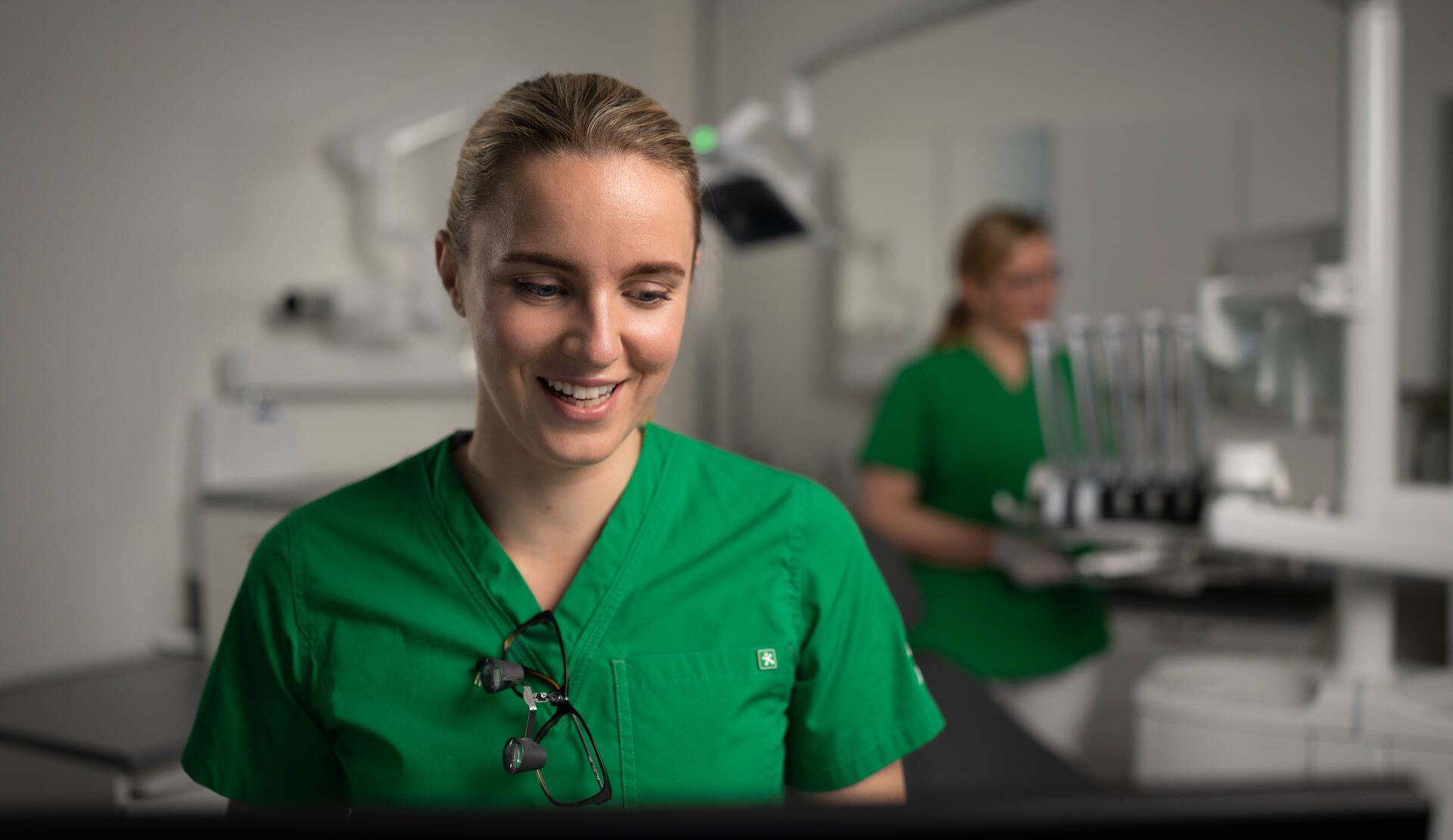
Facelift
Specialists in the article


Revised 6/24/2025
Facelift in brief
- A facelift rejuvenates the appearance, improves facial contours, and can remove excess fat if necessary.
- Facelifts can be performed using various techniques, and the operating surgeon selects the most suitable method based on aesthetic goals and individual characteristics.
- The first step is a consultation with a plastic surgeon to discuss aesthetic goals, expectations, and overall health.
Who is a facelift suitable for?
A facelift may be appropriate if sagging skin on the jawline, neck, or under the chin is causing concern due to aging. Facelifts are performed on both women and men. Most patients undergoing a facelift are between 45 and 70 years old, but excellent results can also be achieved for those over 70.
A facelift, or lower face and neck lift, can address:
- Sagging skin on the cheeks that droops toward the jawline.
- Loose and hanging skin under the chin and on the neck.
- Lines extending from the nose to the corners of the mouth.
- Sagging skin and deep wrinkles in the cheek area.
- Excess fat under the chin.
It is advisable to discuss the suitability of the procedure with a plastic surgeon if you have high blood pressure, blood clotting disorders, wound healing issues, or excessive scar formation, such as keloids.
Treatment of nasolabial folds
Nasolabial folds, which extend from the sides of the nose to the corners of the mouth, are often treated with fillers that smooth the lines and restore skin volume. If the skin and the underlying soft tissues have significantly sagged, forming deep lines or distinct folds, the best solution might be a surgical lift.
Treatment of marionette lines
Marionette lines, which run downward from the corners of the mouth, can easily make the face appear sad or tired. These are often treated with fillers, but for deeper and more pronounced lines, a more effective solution might be a surgical procedure, such as fat transfer and a lower face lift.
Neck tightening and firming
The skin on the neck is delicate and prone to signs of aging, such as sagging and wrinkles. A surgical neck lift removes excess skin and tightens tissues. Neck treatments are often combined with facelifts to achieve a harmonious result.
Additional procedures during a facelift
If necessary, other procedures, such as upper eyelid surgery or facial fat transfer, can be performed alongside a facelift.
A brow lift, or forehead and eyebrow lift, addresses functional and aesthetic concerns caused by drooping eyebrows.
Preparing for a facelift
- Consultation. The first step is a consultation with a plastic surgeon. During the appointment, aesthetic goals, expectations, and any concerns are discussed. The plastic surgeon also evaluates overall health.
- Health status assessment. The consultation includes a review of past and current medical conditions, medications, supplements, previous surgeries and treatments, as well as alcohol and tobacco use.
- Possible weight loss. Significant weight loss of over 15 kilograms can affect surgical results. Therefore, the surgeon will discuss any weight loss plans.
- Physical examination. The plastic surgeon examines the facial bone structure and deep tissues, their thickness, skin elasticity, and the depth of wrinkles and folds. The hairline is also assessed. The surgeon plans the placement of the subtle incision made during the surgery.
- Smoking and medications. Smoking and certain medications should be discontinued two weeks before the surgery.
How a facelift proceeds
Facelifts can be performed using various techniques. The operating plastic surgeon selects the technique based on the discussed aesthetic goals and individual characteristics.
The incision is usually hidden along natural wrinkles and folds. It typically begins behind the hairline at the temple, continues in front of the ear, around the earlobe, and behind the ear, partially into the hairline at the back of the head.
During the surgery, the facial skin is separated from the deep tissues. Loose and sagging connective tissues are lifted back to their original position, improving facial contours. A small liposuction under the chin may also be necessary.
In the recovery room, the patient’s condition is monitored, and pain relief is provided as needed. Skilled staff ensure that post-operative recovery proceeds as smoothly and safely as possible.
The procedure is usually performed under general anesthesia. An anesthesiologist monitors the patient’s condition during and after the surgery. A facelift may require an overnight stay at Mehiläinen’s hospital ward or recovery room.
Recovery after a facelift
- Daily Activities. Light daily activities can be performed during the first week.
- Bandages and stitches. Bandage and stitches. After the surgery, a bandage is applied to the face. However, the use of a bandage depends on the surgeon, and it is not always necessary. Small drainage tubes may be placed under the skin to prevent the accumulation of fluid and blood. During the first week after the surgery, the facial bandage, if applied, is removed. Stitches are also removed.
- Swelling. Swelling in the facial area is common the day after surgery. It can be reduced by keeping the head elevated. Even during sleep, the head of the bed should be raised, or pillows should be used to maintain a semi-upright position.
- Bruising. Most bruises disappear within two weeks after the surgery, but it is advisable to allow 3–4 weeks for recovery. The pace of healing is individual.
- Pain management. Pain may occur after the surgery and is managed with painkillers.
- Hygiene. Showering is allowed during the first week after the surgery.
- Excellent results with a facelift. Most patients who undergo a facelift are very satisfied with the results. However, recovery takes time, and the final results will be visible several months after the surgery.
The prices presented are indicative. The exact price will be determined after a consultation with the plastic surgeon, once individual needs have been assessed. The decision to proceed with surgery can be made after the consultation.
The final price is influenced by factors such as:
- Value-added tax (VAT): If the surgery is part of medical treatment, such as breast reduction or eyelid correction, no VAT is charged for the procedure. If a similar surgery is performed for aesthetic reasons, VAT will be added to the price.
- Procedure location: The price is affected by whether the surgery is performed in outpatient procedure conditions or as day surgery in a hospital.
At Mehiläinen, you can flexibly use various payment methods, such as paying in installments. Read more about payment methods.
| Service | Price estimate |
|---|---|
| Abdominoplasty also known as tummy tuck, vat 25.5 % The price does not include compression garments, 100–200 €, or overnight monitoring and on-call services, 740–1500 €/night. | from 9 550,00 € No Kela reimbursement |
| Scar revision in the head or neck area, vat 0 % | from 550,00 € No Kela reimbursement |
| Facelift, vat 25.5 % The price does not include compression garments, 100–200 €, or overnight monitoring and on-call services, 740–1500 €/night. | from 13 600,00 € No Kela reimbursement |
| Eyebrow lift, vat 0 % | from 4 100,00 € No Kela reimbursement |
| Eyebrow lift, aesthetic, vat 25.5 % | from 5 150,00 € No Kela reimbursement |
| Rhinoplasty, vat 25.5 % | from 12 900,00 € No Kela reimbursement |
| Removal of a mole or skin lesion, vat 0 % The price does not include potential tissue sample analysis. Tissue sample analysis starts at 122.50 €. | from 470,00 € No Kela reimbursement |
| Removal of a mole or skin lesion with a laser in the head or neck area, vat 0 % The price does not include potential tissue sample analysis. Tissue sample analysis starts at 122.50 €. | from 430,00 € No Kela reimbursement |
| Forehead lift, open or endoscopic, vat 25.5 % The price does not include compression garments. Compression garment prices are 100–200 €. | from 7 300,00 € No Kela reimbursement |
| Liposuction from a small area (e.g., under the chin, vat 25.5 % The price does not include compression garments. Compression garment prices are 100–200 €. | from 2 900,00 € No Kela reimbursement |
| Liposuction from a larger area, e.g., abdomen and flanks, vat 25.5 % The price does not include compression garments. Compression garment prices are 100–200 €. | from 8 150,00 € No Kela reimbursement |
| Removal of breast implants from both breasts, vat 25.5 % | from 4 600,00 € No Kela reimbursement |
| Breast lift surgery for both breasts, vat 25.5 % The price does not include compression garments. Compression garment prices are 100–200 €. | from 9 600,00 € No Kela reimbursement |
| Breast reduction surgery for both breasts, vat 0 % The price does not include compression garments. Compression garment prices are 100–200 €. | from 8 800,00 € No Kela reimbursement |
| Breast reduction surgery (aesthetic) for both breasts, vat 25.5 % The price does not include compression garments. Compression garment prices are 100–200 €. | from 11 000,00 € No Kela reimbursement |
| Breast augmentation with implants, vat 25.5 % The price does not include implants or support bras. Implant prices are 580–1100 €/pcs. Compression garment prices are 100–200 €. | from 5 800,00 € No Kela reimbursement |
| Upper eyelid surgery for both eyes, vat 0 % | from 2 050,00 € No Kela reimbursement |
| Upper eyelid surgery (aesthetic) for both eyes, vat 25.5 % | from 2 600,00 € No Kela reimbursement |
Other related services
Body and breasts
Comprehensive and expert plastic surgery for the body and breasts.
Consultation with a plastic surgery nurse
A free consultation helps you find the right treatment options.
Face and eyelids
We provide personalized solutions for the aesthetic needs of your face and eyelids.
Nose and ears
Enhance the shape and structure of your nose or ears with the expertise of a plastic surgeon.
Plastic surgeon
A specialist in plastic surgery performs treatments and surgeries to enhance the appearance and functionality of the face and body.
Skin lesions and moles
Treat skin lesions and remove moles safely and discreetly.
Frequently asked questions about facelifts
During a facelift, the skin on the face and neck is tightened, and excess skin is removed. The procedure may also involve lifting deeper tissues and removing excess fat. This improves facial contours and rejuvenates the appearance.
A facelift helps reduce signs of aging, such as sagging skin and deep wrinkles. It enhances the contours of the face and neck, which can boost self-confidence and create a more youthful appearance. While a facelift does not stop the aging process, the results are typically satisfying for many years.
Preparation begins with a consultation with a plastic surgeon, where your health status and aesthetic goals are discussed. Smoking and certain medications should be discontinued before the surgery. It is also important to follow the plastic surgeon’s instructions, such as avoiding significant weight fluctuations.
Recovery usually takes 3–4 weeks, but bruising and swelling may subside within two weeks. The final results will be visible several months after the surgery. Light daily activities can be resumed during the first week.
A facelift is generally suitable for individuals aged 45–70, but older patients can also benefit from the procedure. Certain health conditions, such as high blood pressure or excessive scar formation, may be contraindications. An initial consultation with a plastic surgeon is essential to assess suitability.
Thousands of women and men undergo facelifts each year with excellent results. However, all surgeries carry risks. The plastic surgeon will discuss these risks during the initial consultation, allowing you to make an informed decision about the procedure.
Following the plastic surgeon’s instructions during preparation is crucial to achieving the best possible surgical outcome.


